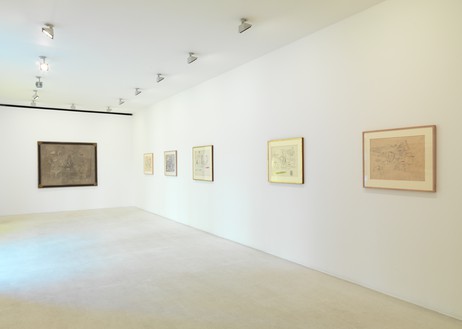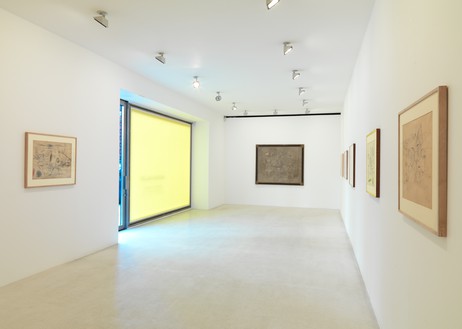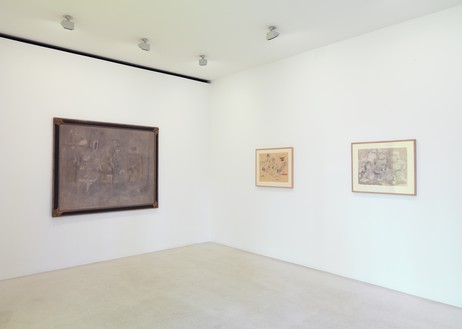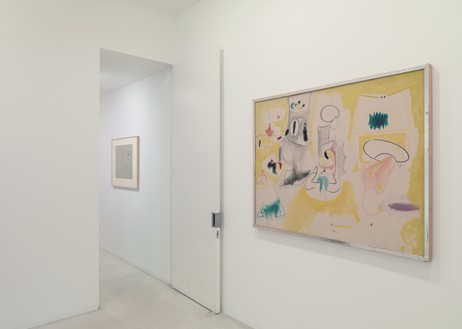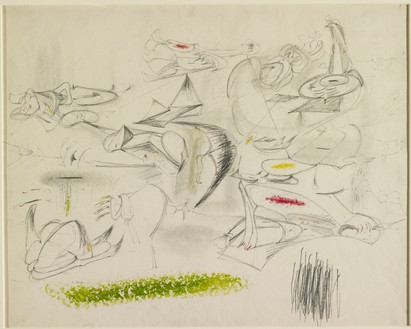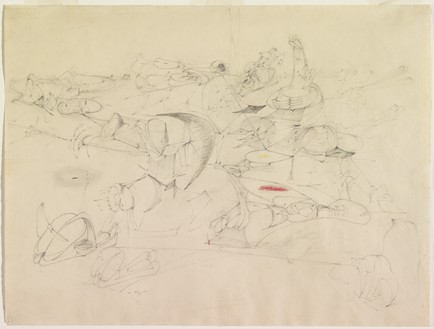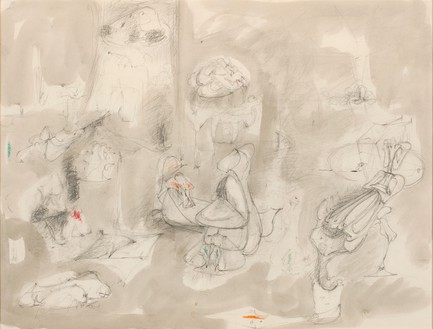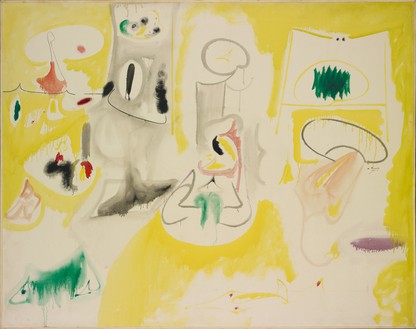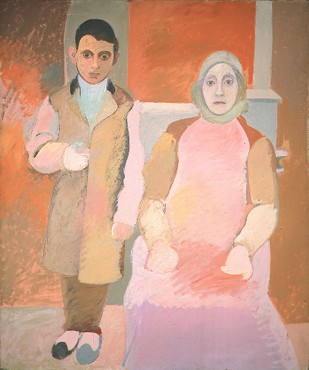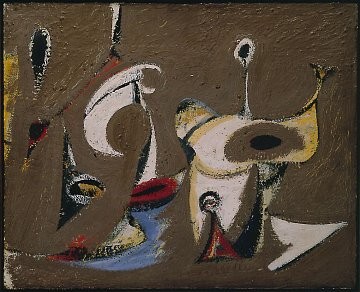About
There is some richness in just this little valley that does seem to inspire him. . .
—Mougouch (Agnes Magruder)
Gagosian Gallery is pleased to present an exhibition by Arshile Gorky, a key figure in the movement towards abstraction that transformed American art. This exhibition coincides with the travelling retrospective opening February 10 at Tate Modern, London.
Toward the end of his life, Gorky left the city to settle in the country where he produced his "Pastoral" work, which explored the arcadian theme that originated during the Hellenistic period and persisted through the Renaissance into the eighteenth and nineteenth centuries. The current exhibition comprises fourteen drawings that he made in 1946 during time spent at Crooked Run Farm, the summer home of his parents-in-law nestled in the gently rolling hills of Virginia. Spurred by fears for his health (he had recently been treated for cancer) and his desire to compensate for the loss of almost thirty paintings in a fire that destroyed his studio, Gorky produced almost three hundred drawings in the period June to October 1946. His wife Mougouch reported Gorky saying that in Virginia "nature entered his head and closed his ears." He was drawing in the fields as if possessed.
Gorky went out day after day into the fields, looking intently at the various flowers and grasses that he saw before him and working freely with pencil, pens, crayons and watercolors. Later he drew multiple repetitions of the drawings made in the fields, which enabled him to ingest new ideas gained outdoors and integrate them into his formal vocabulary. He detached color from the drawn line to make them discrete pictorial components; he washed the drawings in his bathtub, hung them up to dry, and later scraped or sanded their surfaces. In this new experimentation with surfaces Gorky further altered the recognizable identity of an image through eliminating specific botanical or biological details. The resulting drawings, such as the Studies for Virginia Summer and the Pastorals are exuberant recordings of botanical and biological things taken apart and transformed into near-abstract renderings of a powerful life force.
